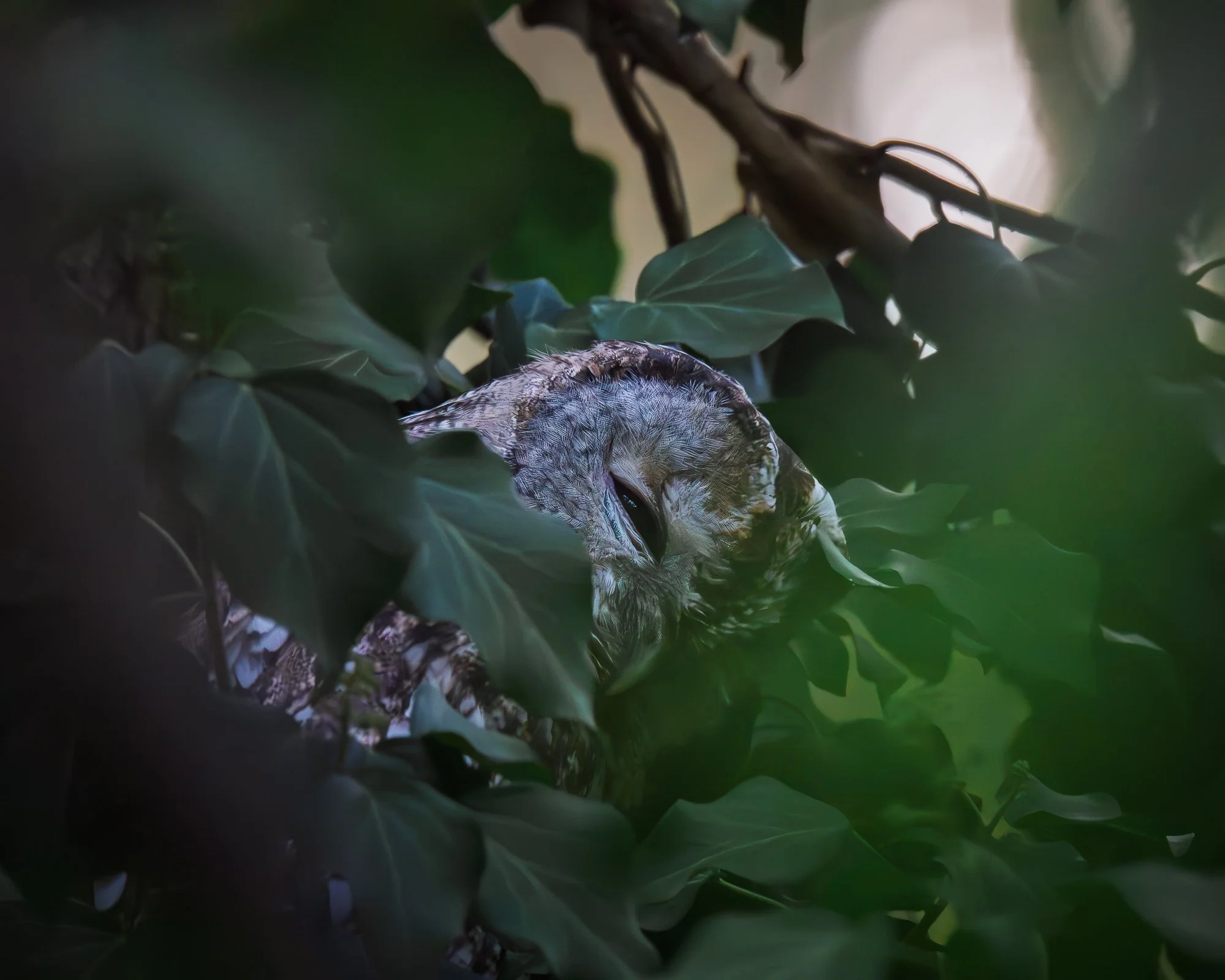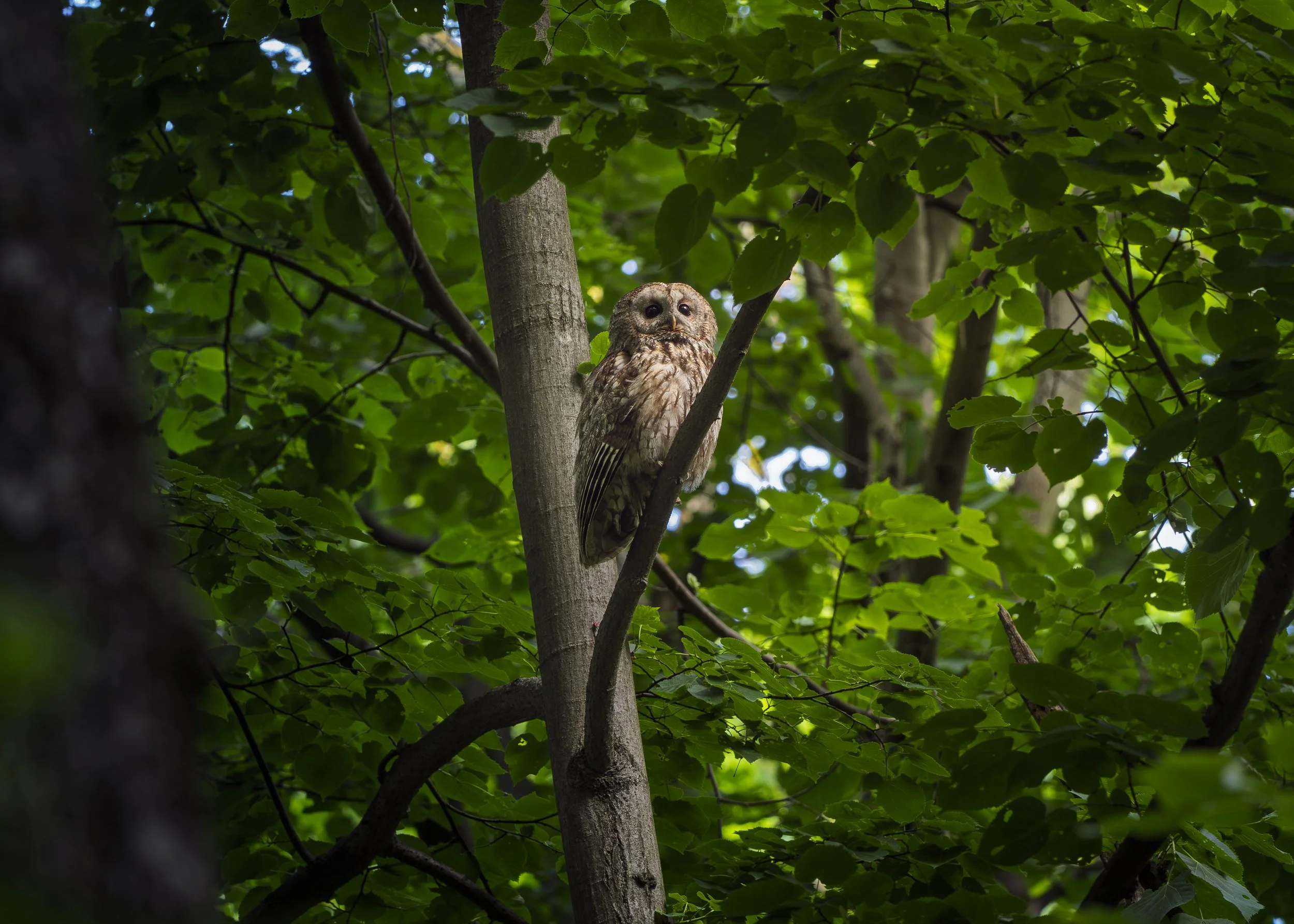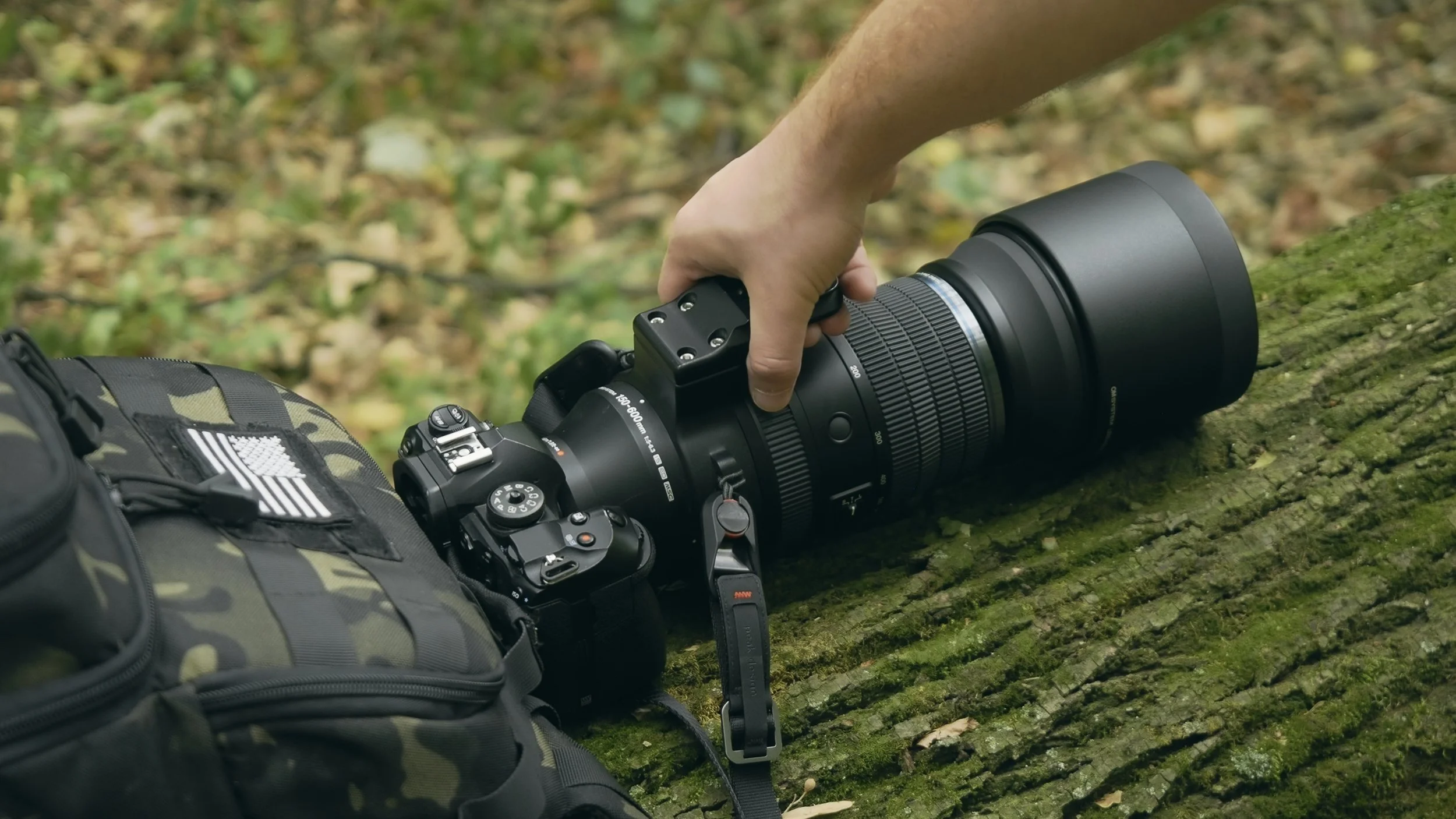Photographing Tawny Owls
The forest was alive with alarm calls. After an hour of waiting in the pre-dawn light, songbirds suddenly erupted in protest—the universal signal that a predator was near. My heart raced as I scanned the canopy: somewhere in these woods, a Tawny Owl was perching.
This is what draws me back to this particular forest, time and again. I've identified three owl species here—the Long-eared, Little owl, and Tawny owls—but it's the Tawny that has captured my fascination most deeply. Every encounter feels like a gift.
Wildlife photography demands patience, but it also requires reading the forest's language. When you lose sight of an owl, the surrounding birds become your guides. Their agitated calls and mobbing behavior create an audible map. I followed the chorus deeper into the woods, moving carefully through the undergrowth.
The forest floor itself tells stories. White wash at tree bases and small undigested pellets mark roosting sites where owls spend their days, hidden from both predators and prey. These subtle clues have become second nature to me now, part of a larger vocabulary of observation.
Tawny Owl (Strix Aluco)
Tawny Owls are remarkable hunters, perfectly adapted to forest life. Their mottled brown plumage provides exceptional camouflage against tree bark, making them nearly invisible when roosting. They're primarily nocturnal, but during breeding season or on overcast days, you might catch them active during twilight hours—exactly when I encountered mine.
What makes them particularly fascinating is their territorial nature. A pair will defend the same territory for years, which is why I return to this spot. They communicate through their distinctive hooting call—a sound that, once learned, helps you track their movements through dense canopy.
Tawny Owl (Strix Aluco) - Sleeping, hidden between the branches of a tree
My admiration for these birds is tempered with deep respect for their defensive capabilities. The story of Eric Hosking serves as a sobering reminder: in 1937, this renowned British bird photographer lost his left eye to a Tawny Owl while photographing near a nest. These owls are fiercely protective parents and will attack perceived threats without hesitation.
Tawny Owl (Strix Aluco)
This knowledge shapes my approach. I maintain distance, use long lenses (today, the OM System 150-600mm), and never approach nesting sites. The goal is documentation, not disturbance.
OM System 150-600mm + OM SYSTEM OM-1 are my long reach to-go camera & lens system when photographing owls
That's the reality of wildlife photography: we're guests in their world, working within constraints we don't control. But when everything aligns, when the light breaks through the trees, when the owl finally settles on an exposed branch, when you hear its haunting call echoing through ancient woods, you remember exactly why you do this work.
The Tawny Owl disappeared back into the canopy, safe and content. And I walked out of the forest with full memory cards and a full heart.




